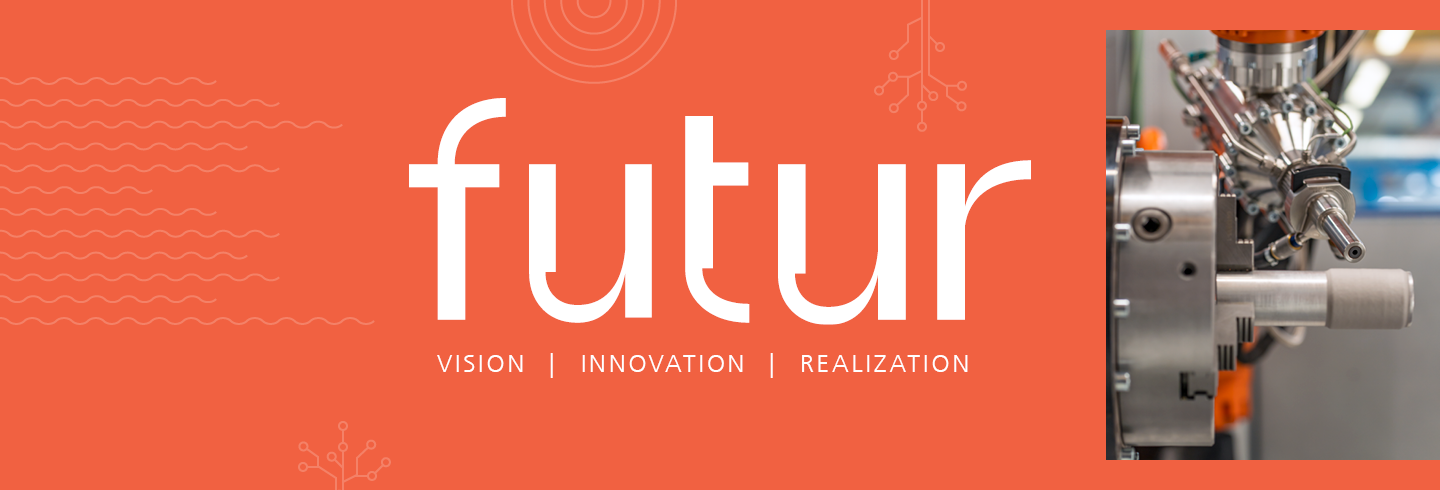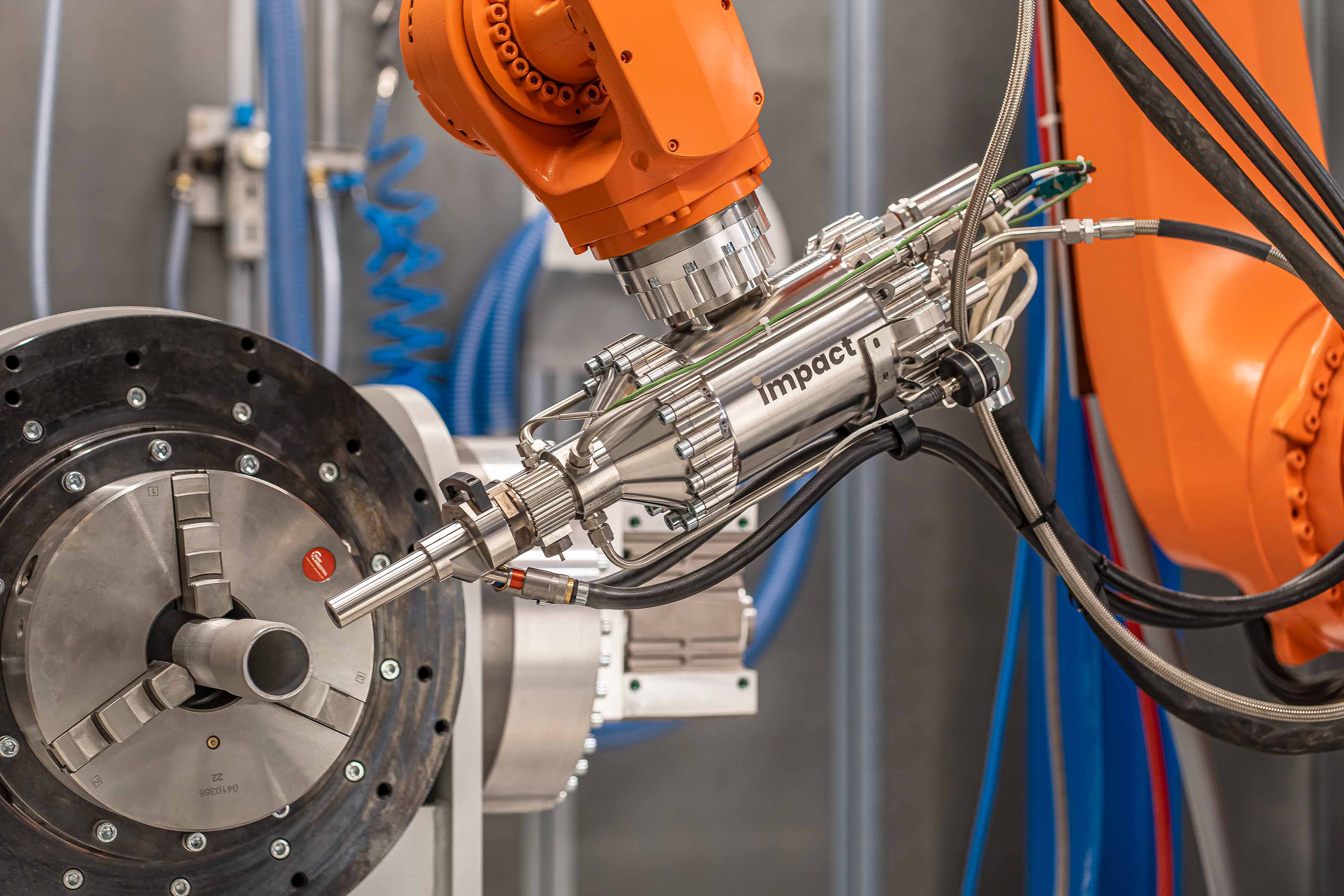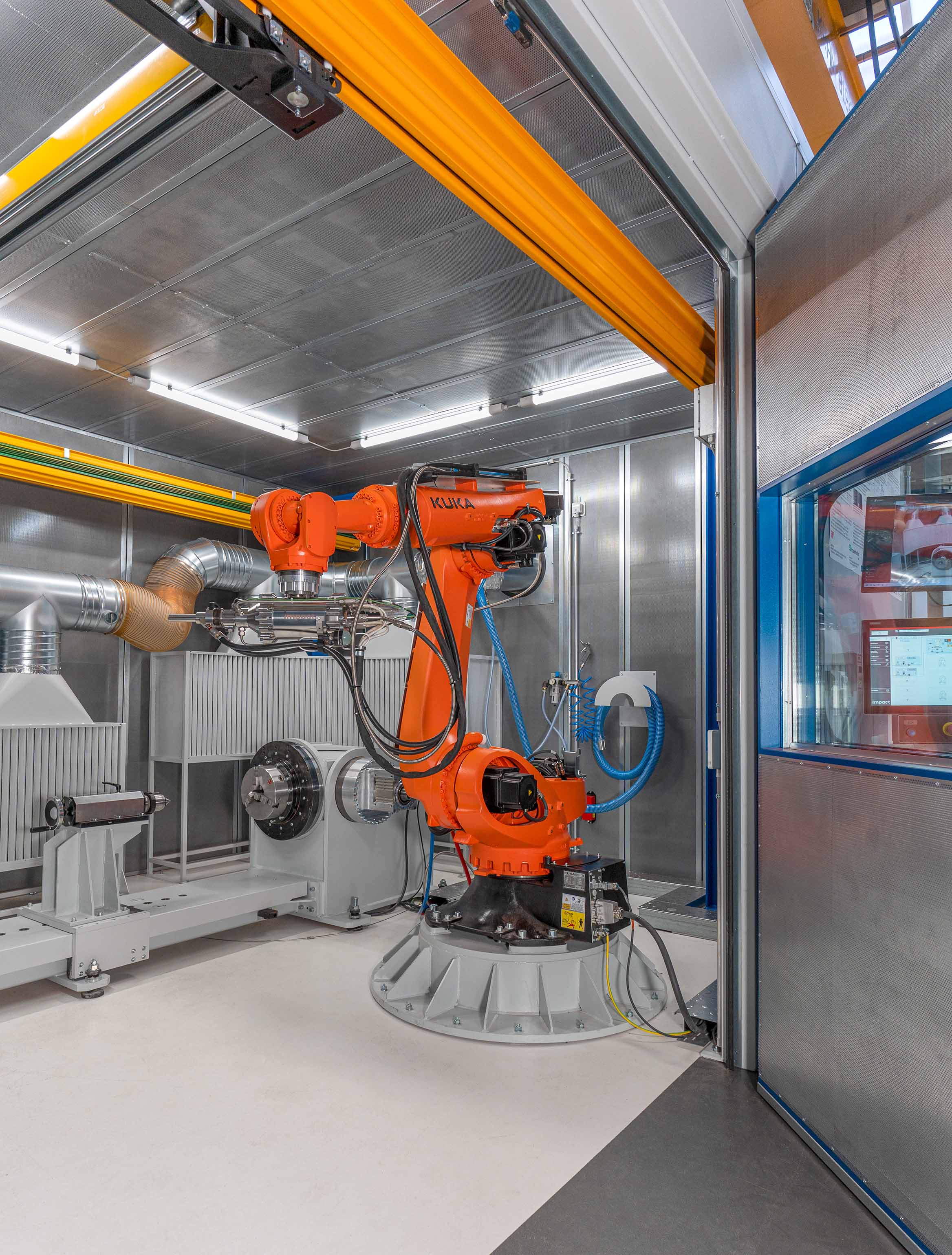Cold spray is considered one of the most modern processes in the field of thermal spraying. A research cooperation has recently equipped Fraunhofer IPK and IWF of TU Berlin with access to a state-of-the-art cold spray manufacturing system.
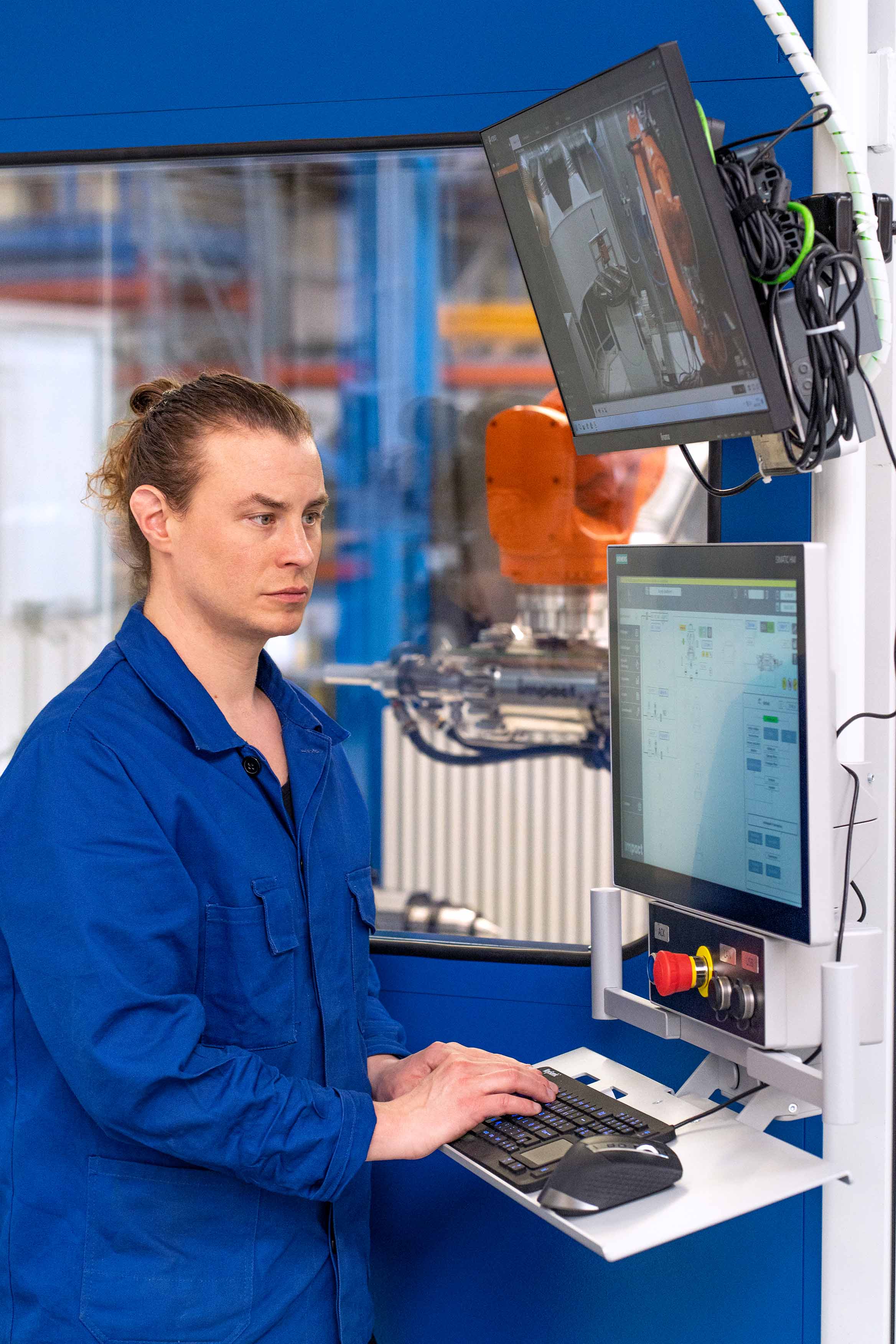

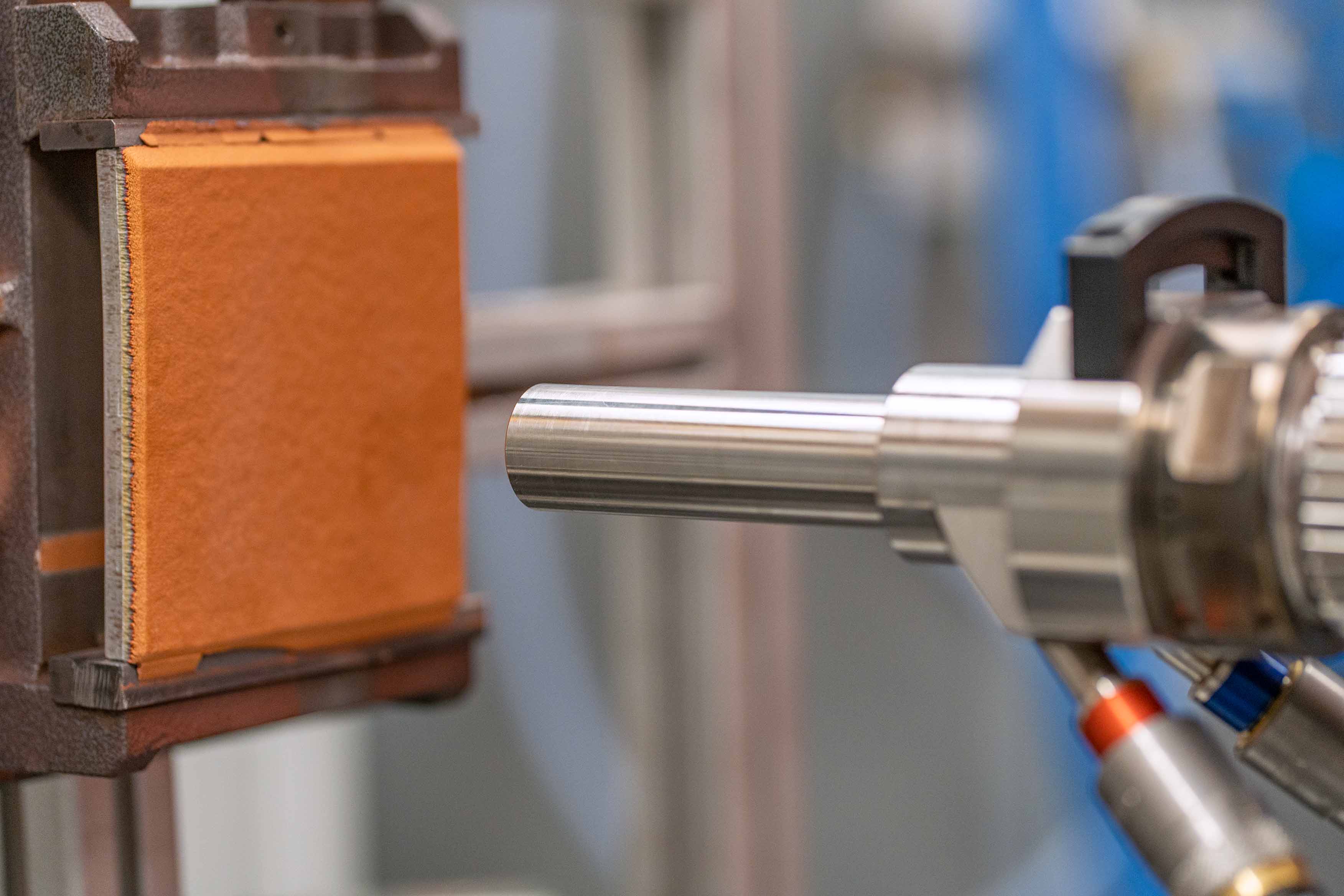
Anyone who wants to manufacture large components with complex geometries, for example for use in the automotive sector, faces a challenge: The heat input of most coating processes harbors the risk of impairing the component shape – the danger of distortion due to residual stresses ensues. Here, the so-called cold spray process offers an innovative solution: A powder material is blasted at high speed onto the surface to be coated. Due to the high velocity, the particles form a solid and resistant layer on impact. Since the powder has a relatively low temperature below the melting temperature during processing, there is no melting and resolidification in the material. Thus, shape deviations due to thermally induced residual stresses can be largely avoided.
As a result of a joint investment with the Werner-von-Siemens Centre for Industry and Science e. V. (WvSC), the TU Berlin's IWF and Fraunhofer IPK have a state-of-the-art manufacturing system for cold gas spraying at their disposal since spring 2023. They aim to use the system for pushing the boundaries of what has been possible to date with additive manufacturing processes.
High Performance Manufacturing System
Cold spray is a coating technology, or more precisely thermal spraying process. In this process, a usually metallic material powder is injected into a carrier gas stream and passed through a Laval nozzle. The fluid mechanics acting in the nozzle accelerate the gas flow to up to three times the speed of sound, causing the material particles to absorb high kinetic energy. When the particles strike a substrate surface, this energy causes them to form a firm deposit.
One can imagine the principle as when a snowball hits a hard surface with a lot of momentum: On impact, the side facing the surface is flattened, and the snowball sticks. If not just one snowball hit the surface, but thousands, the result would be a layered structure similar to that produced by cold spraying. High component densities and excellent material properties are achieved. These include high mechanical load-bearing capacity and thermal or electrical conductivity, which can be specifically adjusted by suitable process parameters. Moreover, material combinations that were previously not possible in the field of additive manufacturing can be realized through a material feed that can be adjusted either serially or in parallel.
The core component of the manufacturing system at WvSC is a spray head by manufacturer Impact Innovations GmbH, which accelerates the carrier gas through a pressure of up to 60 bar and a gas temperature of 1100 degrees. A latest-generation Kuka robot brings the spray head into relative motion with the workpiece to be manufactured. This movement defines at which point of the component geometry material is to be applied. The robot's reach enables component dimensions of more than two meters. The highly performant control system, which can also control additional axes aside from the six robot axes, enables the production of component designs with complex geometries.
Research on Innovative Technologies
Current research projects underline the high degree of innovation of cold spray processes. The research project »Electric Drives 2.0«, which is being carried out in cooperation with WvSC, is dedicated to the competitive electric machine of the future. The process chain for manufacturing large electrical high-voltage machines has so far been characterized by the use of conventional manufacturing technologies. Additive manufacturing processes offer the possibility of breaking through geometric limitations in the production of stator windings as well as permanent magnets and thus achieving higher power densities.
In the »AddGleis« cooperation project from the Additive Manufacturing Berlin Brandenburg (AMBER) funding program of the state of Berlin, the cold spray system is being used for additive manufacturing of topology-optimized lightweight components. A powerful imaging sensor system in combination with AI-based monitoring of the process result will contribute to the additional further development of process control.
 Fraunhofer Institute for Production Systems and Design Technology
Fraunhofer Institute for Production Systems and Design Technology